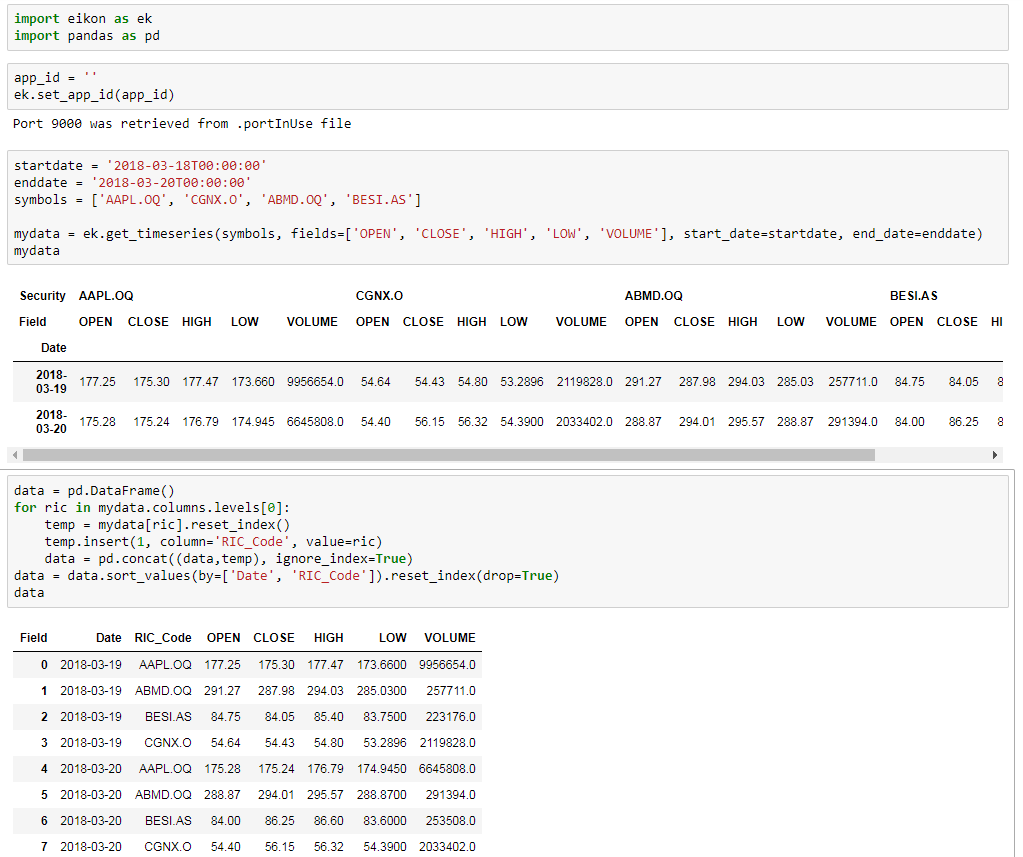Using the following Python statement:
startdate = '2018-03-18' enddate = '2018-03-20' symbols = ['AAPL.OQ', 'CGNX.O', 'ABMD.OQ', 'PCO.V', 'BESI.AS']
mydata = ek.get_timeseries(symbols, fields=['OPEN', 'CLOSE', 'HIGH', 'LOW', 'VOLUME'], start_date=startdate, end_date=enddate)
I get a dataframe where the columns consist of the <Date>, <tickername+u'OPEN', tickername+u'CLOSE', tickername+u'HIGH', tickername+u'LOW', tickername+u'VOLUME', tickername+u'OPEN', next_tickername+u'OPEN', next_tickername+u'CLOSE', next_tickername+u'HIGH', next_tickername+u'LOW', next_tickername+u'VOLUME', third_tickername+u'OPEN', etc, etc. and rows consist of dates.The price quotes are filled accordingly.
Is there a way to issue a statement for multiple symbols and retrieve a dataframe where columns are:
'Date','RIC_Code', 'OPEN', 'CLOSE', 'HIGH', 'LOW', 'VOLUME'
and the rows are filled with dates and price quotes accordingly?





